Seconded By: Britta Jaschinski,
Across Europe, the relationship between humans and animals is in flux—no longer defined by simple binaries of wild and tame, useful and sacred, or protected and exploited. This project explores the nuanced, often contradictory ways in which animals move through our human-dominated world and how, in doing so, they mirror us back to ourselves.
This is an inquiry into the evolving space we share with other species on a continent that often prides itself on progress, yet continues to wrestle with old instincts—control, affection, exploitation, reverence. At its core lies a philosophical tension: what does it mean to live alongside other sentient beings in an age where boundaries blur, roles shift, and the old stories we tell ourselves no longer seem to hold?
Europe offers a unique stage for this investigation. Centuries of domestication, mythology, and moral frameworks collide with modern science, ethics, and environmental pressure. But this is not a historical reflection—it is a portrait of the now, with all its contradictions. It is about how we think with animals, not just about them. How we shape their lives and they, in turn, shape our imagination, our science, our identity.
This project emerged from my ongoing fascination with the emotional, ecological, and ethical boundaries we draw between ourselves and animals. Photography has always been my way of exploring those boundaries—not just to observe what we do to animals, but to better understand what that reveals about who we are. Europe, often positioned as a leader in conservation and animal welfare, offers a paradox-rich backdrop—where compassion and exploitation coexist, and where progress doesn’t always mean harmony.
Through this work, I hope to spark reflection on how deeply entangled our lives have become—and how the stories we tell about animals are, ultimately, stories about ourselves. Photography allows me to hold space for those moments, to confront discomfort without turning away, and to question the systems we inherit and perpetuate. I don’t seek to provide answers, but to sharpen the questions.
This is not a call to action in the traditional sense. It is an invitation—to notice, to reflect, to reckon with our entanglement. Because ultimately, the way we treat animals says less about them, and everything about us.
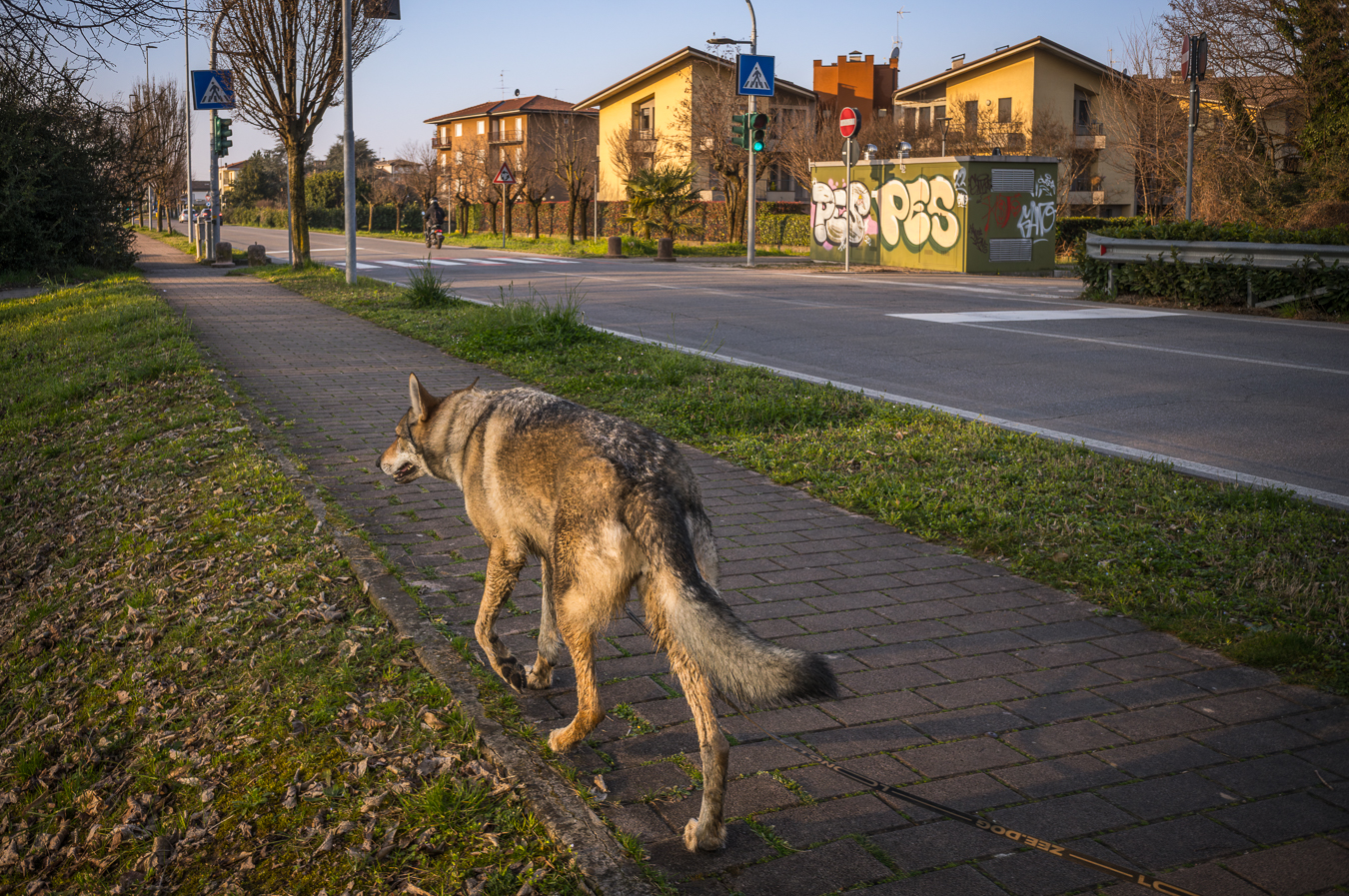
The Wolf We Could Live With
Era, a Czechoslovakian wolfdog with 30% wolf DNA, walks through the streets of Vailate, Italy. Bred from wolves yet raised to live beside humans, she reflects our enduring impulse to reshape the wild—not to banish it, but to make it ours.
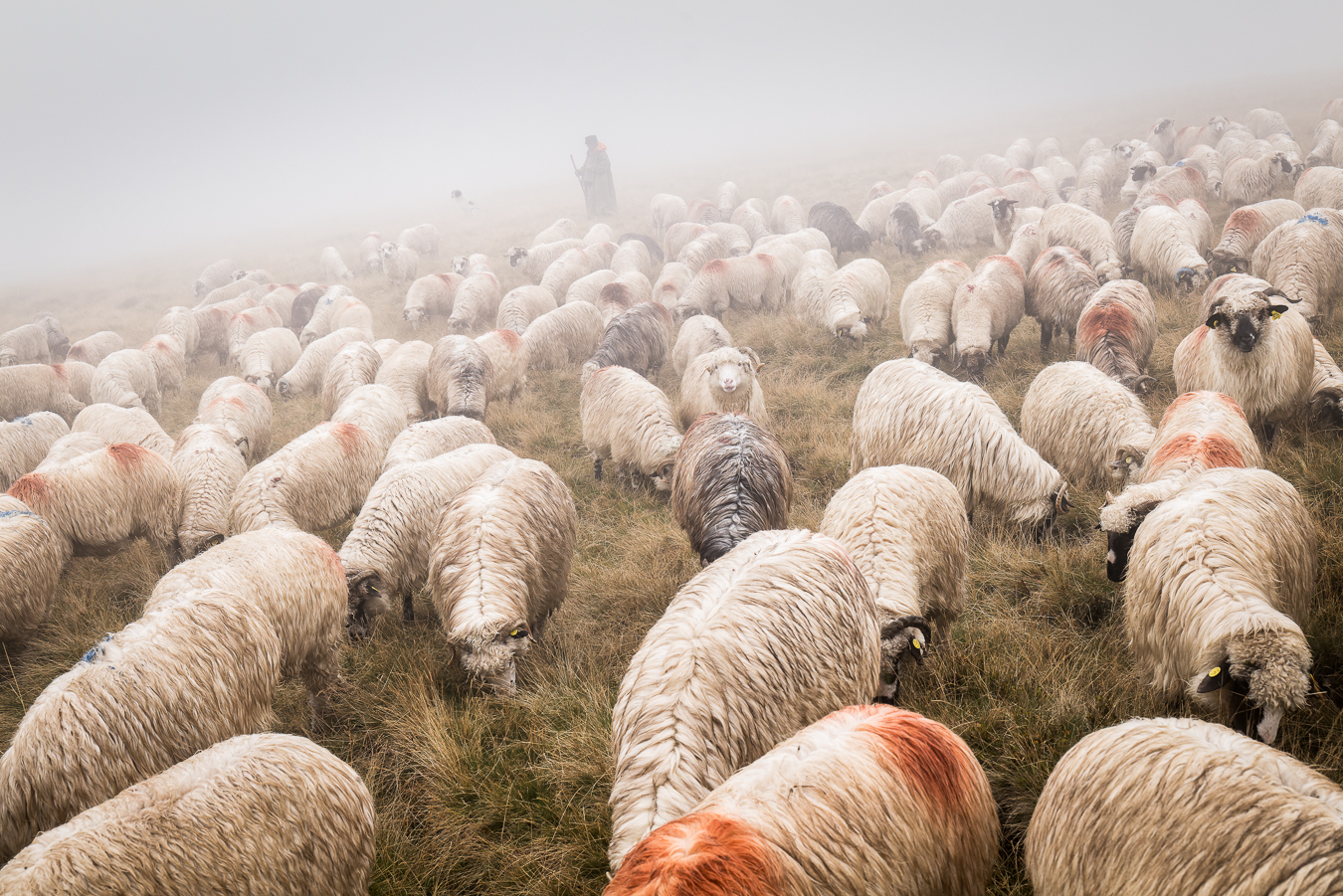
Leaving the Flock Behind
In Romania’s Carpathians, a shepherd and his flock continue a centuries-old relationship. As younger generations turn away from this way of life, these bonds disappear—along with the grazing rhythms that once sustained biodiversity across these fragile mountain ecosystems.
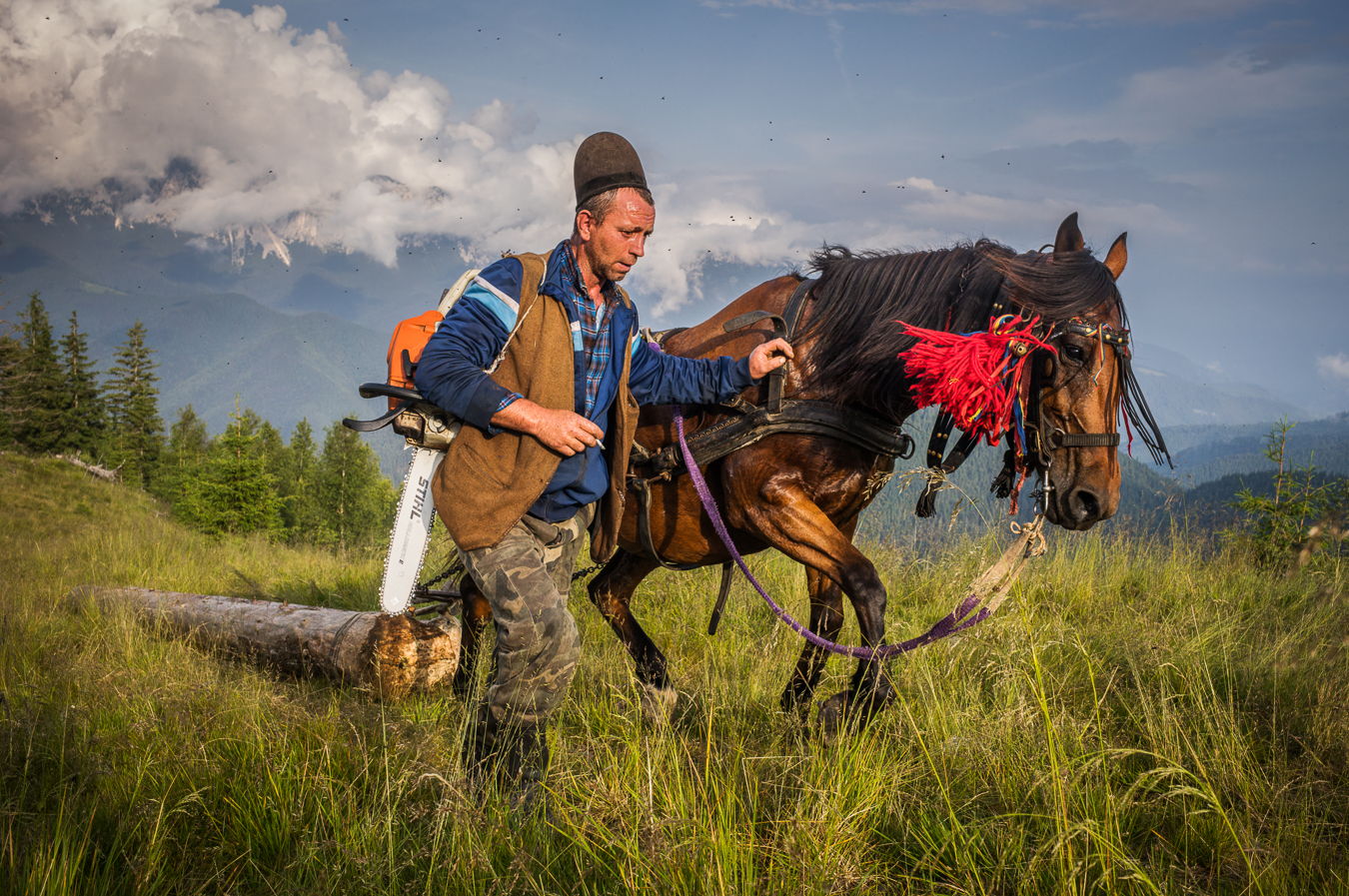
Bearing the Load
High up in the Carpathian mountains, Ion Varga and his horse haul firewood from the forest. For generations, such labor has sustained mountain life. In these working partnerships, animals remain not just tools—but central figures in the rhythms of rural survival.
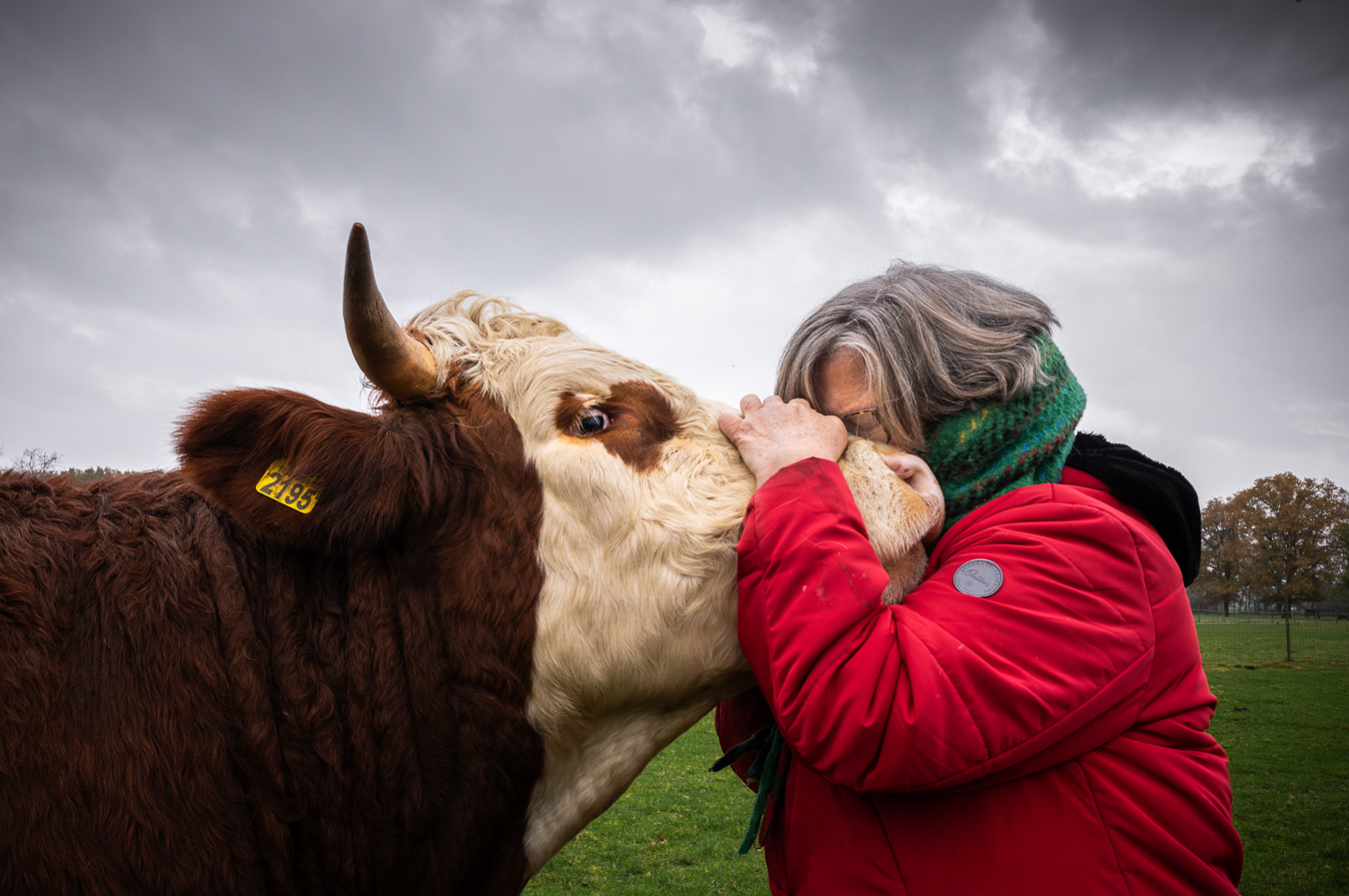
Where Understanding Begins
Professor Leonie Cornips studies cow communication to better understand how animals relate to us—and each other. Her work invites a shift: from using animals for labor, to recognizing them as sentient beings with voices shaped by relationship, context, and care.
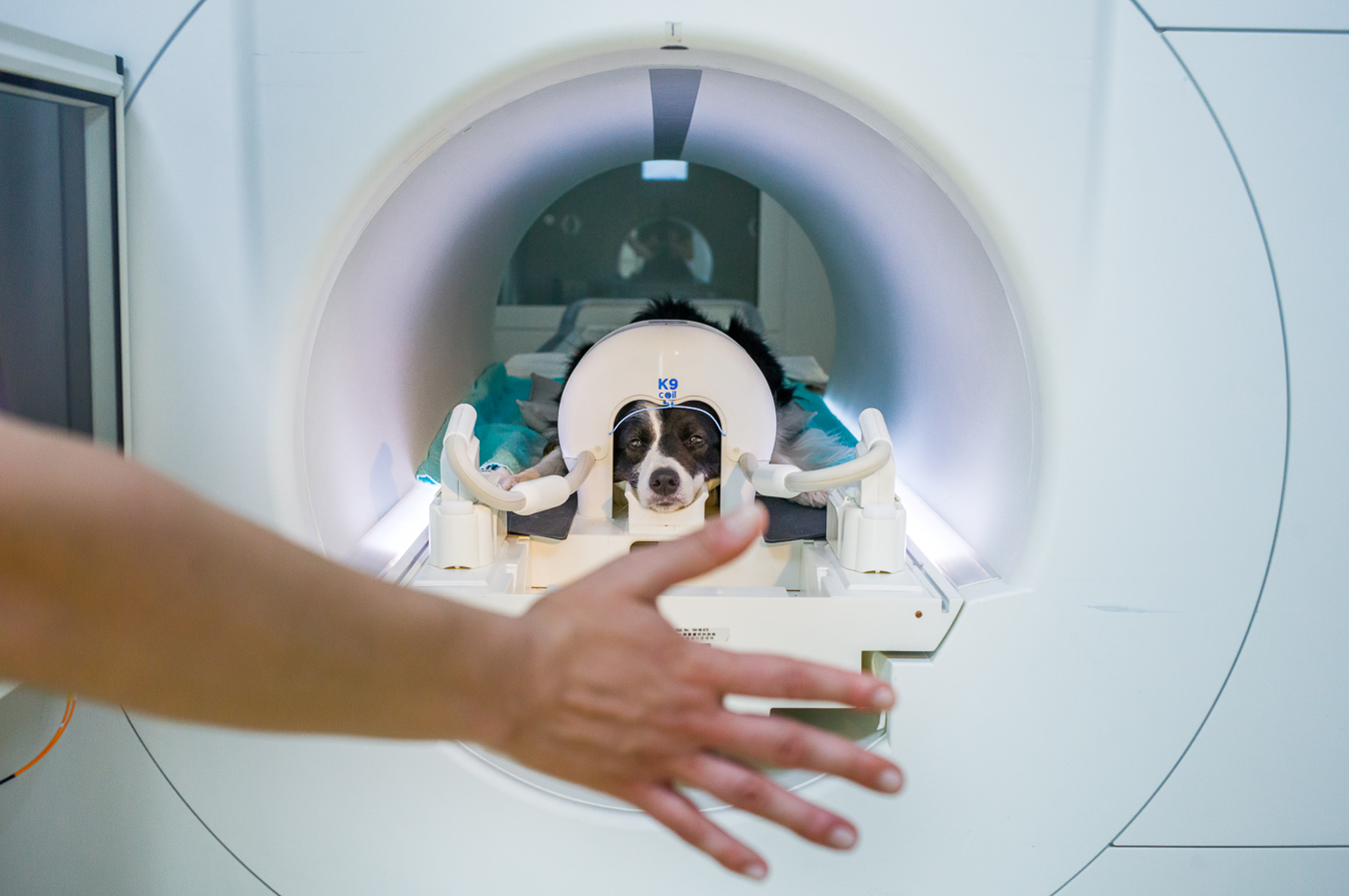
Evidence of Affection
At the University of Vienna, a dog named Knopfi lies still in an MRI scanner. Researchers study brain responses to praise and human faces—seeking scientific proof of what many already sense: animals feel us, bond with us, remember us.

Understanding at a Distance
At a Dutch zoo, an orangutan’s gaze is tracked via touchscreen as part of primate cognition research. Sipping juice through a tube, he navigates an interface designed to study us both—revealing emotional cues we share, and limits we impose.

Because of Us
A black-tailed godwit, bred in captivity, is caught before its release in Flanders. As farmland expands and wetlands vanish, human care becomes a lifeline—because in the end, the survival of wild species depends not just on ecosystems, but on what we choose to value.

The Life We Feed Them
A white stork stands on a landfill in southern Spain, where year-round waste has created new feeding grounds. Once a symbol of new life, the stork now survives on human discard—its migration patterns reshaped by our appetite for convenience.
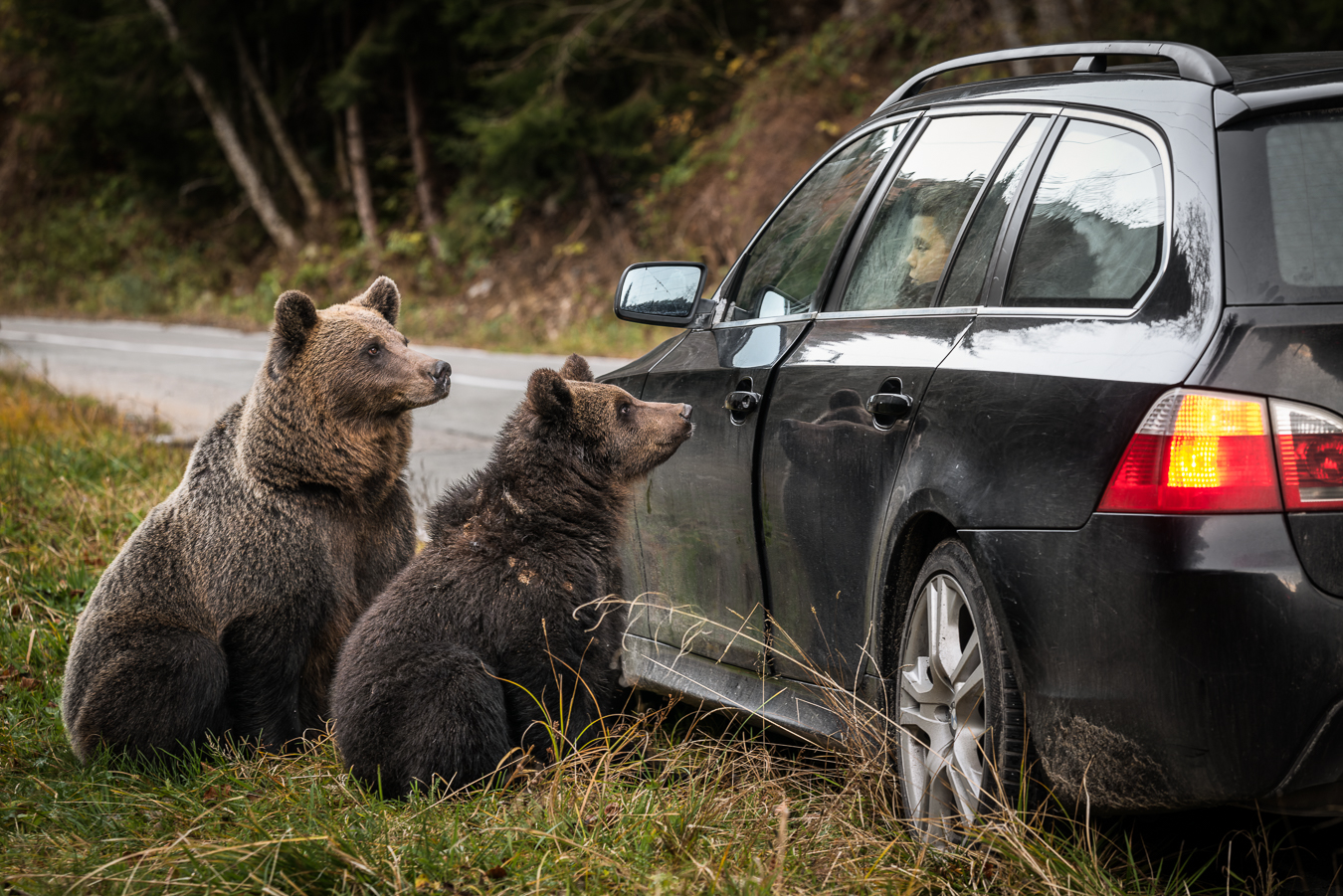
Coexistence, Compromised
A boy watches from a car as a mother bear and her cub approach, hoping for food. Repeated feeding has reshaped their instincts—blurring the line between wild and tame, and complicating how future generations will relate to wilderness itself.
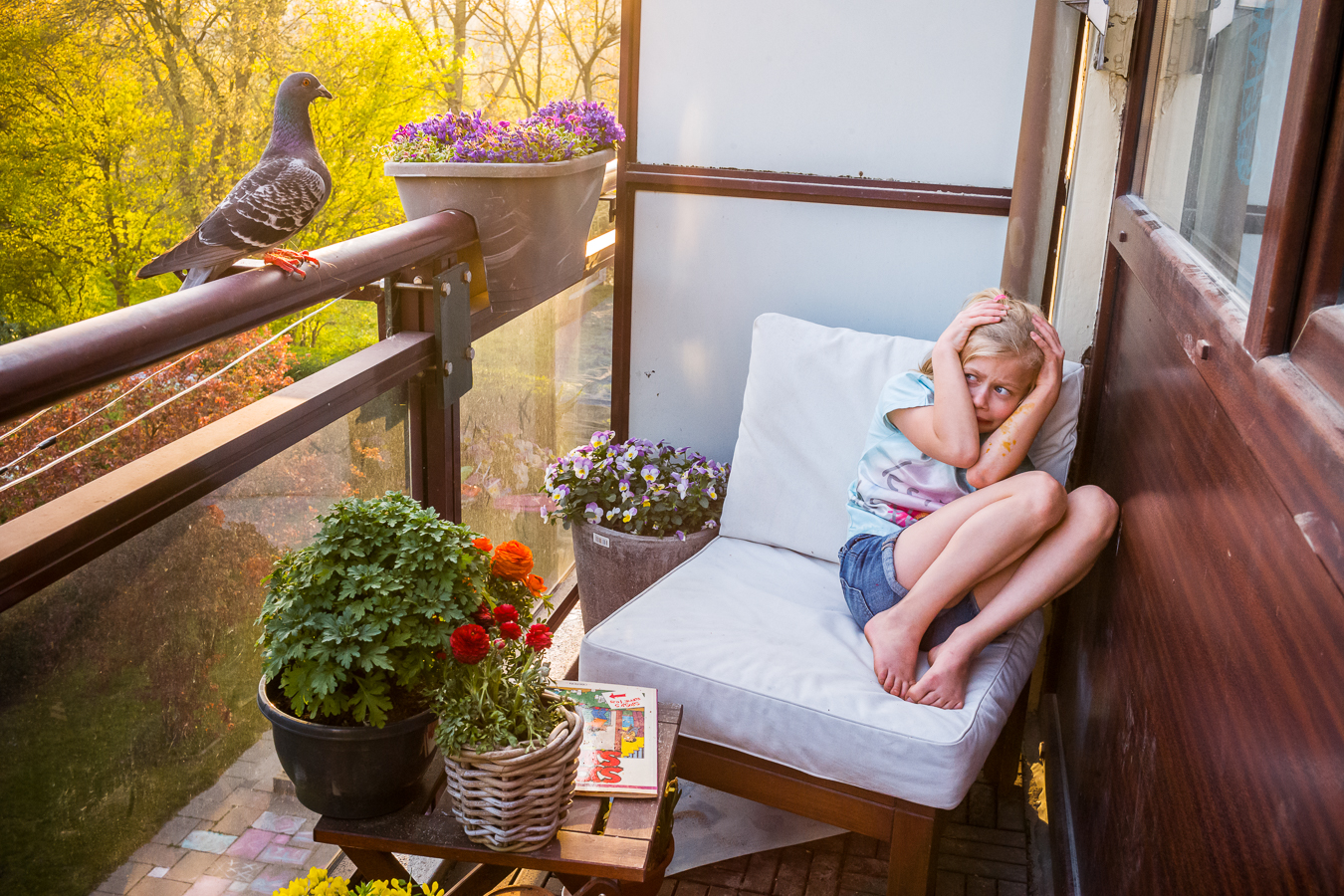
Getting to Know Ollie
My daughter recoils from a nesting pigeon named Ollie, startled by his sudden arrival on our balcony. At first, she feared them. But slowly, she began to know them—learning their habits, recognizing their presence. Coexistence often begins with the willingness to pay attention.